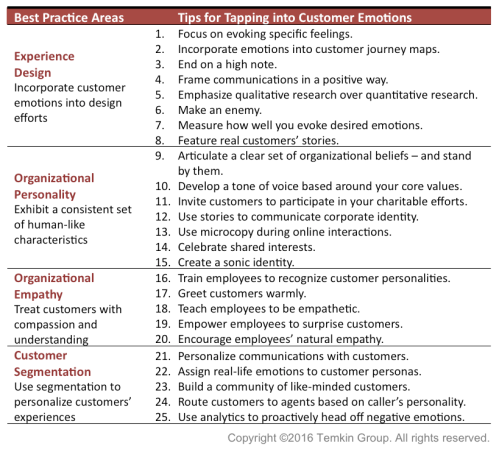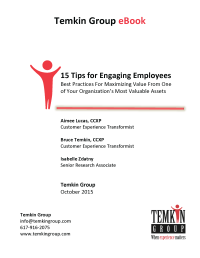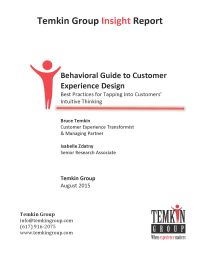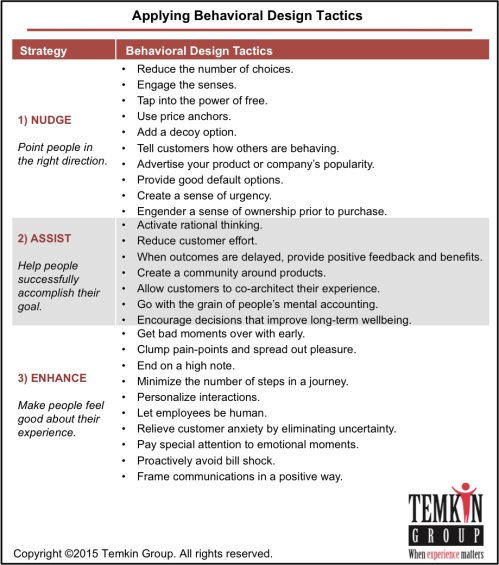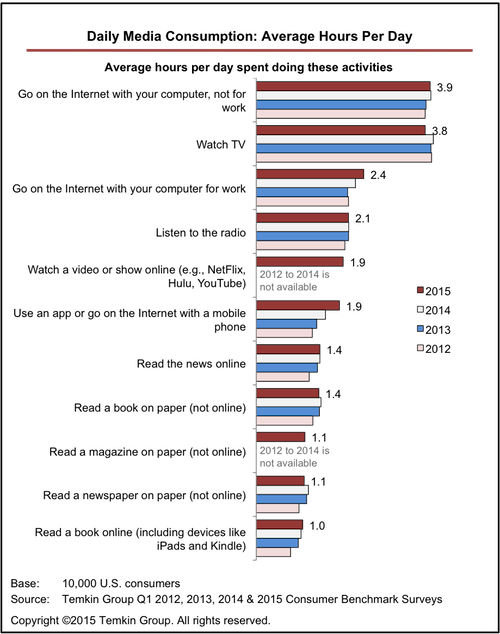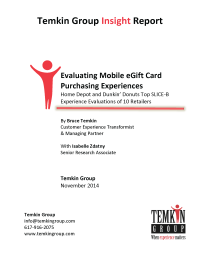 We just published a Temkin Group report, Lessons in CX Excellence, 2015. The report provides insights from 8 finalists in the Temkin Group’s 2014 CX Excellence Awards. The report, which is 98 pages long, includes an appendix with the finalists’ nomination forms. This report has rich insights about both B2B and B2C customer experience.
We just published a Temkin Group report, Lessons in CX Excellence, 2015. The report provides insights from 8 finalists in the Temkin Group’s 2014 CX Excellence Awards. The report, which is 98 pages long, includes an appendix with the finalists’ nomination forms. This report has rich insights about both B2B and B2C customer experience.
Here’s the executive summary:
This year, we chose eight organizations as finalists for Temkin Group’s 2014 Customer Experience Excellence Award. Finalists are Activision Customer Care, Aetna, Crowe Horwath LLP, Dell Inc., EMC Corporation, Texas NICUSA, The Results Companies, and TouchPoint Support Services. This report provides specific examples of how these companies’ CX efforts have created value for both their customers and for their businesses. We also highlight their best practices across the four customer experience competencies—purposeful leadership, compelling brand values, employee engagement, and customer connectedness. At the end of this report, we have included all of the finalists’ detailed nomination forms to help you collect examples and ideas to apply to your own CX efforts.
Download report for $195

Watch Temkin Group webinar about this research.
Here are some highlights from the finalists:
- Activision Customer Care. Activision demonstrates its commitment to creating great game player experiences in a multitude of ways, such as emphasizing the use of player feedback to identify improvement opportunities. Activision combines this dedication to listening to its players with a willingness to redesign significant interactions. For example, it revamped its “Contact Us” page to include ambassador chat and callback scheduling, which resulted in higher satisfaction and lower effort for customers.
- Aetna. Despite being in an industry undergoing tremendous change, Aetna is focusing on its 2020 vision to make the company 100% customer-centric. It has implemented many changes to help achieve this goal, including providing service over the phone and investing in text and speech analytics to better identify customer pain points and improve the behaviors and skillsets of its call representatives. The latter effort has already resulted in reduced repeat calls, improved accuracy, and a higher Net Promoter Score (NPS).
- Crowe Horwath. With a client engagement score towering 33 points above the accounting industry average, Crowe Horwath is seeing the pay-off of its efforts to deliver an exceptional client experience. These efforts include establishing a firm-wide governance model and measurement scorecard, implementing a closed-loop voice of the customer program, incorporating customer journey mapping to uncover moments of truth, and engaging employees through training, client-driven CX recognition programs, and an employee ambassador program.
- Dell. Dell’s CX efforts start with an emphasis on listening to and engaging with customers and employees. Dell enlists different groups from across the company—including engineering, marketing, sales, support, and digital—to make improvements to the entire customer journey. As a result of this work, Dell has opened 16 solution centers—which gives customers a place to experience solutions—and has provided proactive support over a wide variety of social channels, simplified Dell.com for consumer and business users, and implemented more than 540 customer innovation ideas.
- EMC Corporation. The Total Customer Experience (TCE) program at EMC works across the enterprise to enhance the company’s customer experience by listening to customer feedback, analyzing data, and taking directed action based on that feedback and data. The program also raises awareness of how every person at the company impacts customer experience. As its CX efforts have matured, the TCE team has evolved to take on more challenging tasks; its projects now include predictive CX analytics, measuring its partner experience quality, and optimizing the experience across many different customer segments and solutions.
- The Results Companies. To support its work as a business process outsourcing provider, The Results Companies uses its own unique operating model called CX360, which allows for continuous business process refinements that improve the customer experience. Built on three pillars—people, knowledge, empowerment—CX360 has helped the company ensure that its 8,500 employees around the globe remain focused on CX. The operating model has also contributed to Results’ strong growth in new clients and year-over-year revenue.
- Texas NICUSA/Texas.gov. Texas NICUSA provides support for Texas.gov and implements technology solutions for Texas governmental agencies. It serves over 50,000 monthly site visitors and 300 state and local governments. Its three-tiered multi-channel customer service approach includes a general customer service Help Desk (phone and online), a Service Desk to support governmental agency needs, and a group of Technology Subject Matter Experts who can provide escalated assistance to either citizens or agency employees.
- TouchPoint Support Services. TouchPoint Support Services streamlines support services within healthcare facilities. The company’s business goals, known as Top of Mind Objectives, guide the work of its 6,800 associates, helping them to find inefficiencies and improve patient satisfaction, associate engagement, safety, unity, and budget compliance. Touchpoint uses many methods for aligning employees with these objectives, including special training for managers and frontline employees, coaching from dedicated customer experience managers (who visit sites regularly), and associate recognition programs.
Download report for $195

If you enjoyed this report, check out Lessons in CX Excellence, 2014 and Lessons in CX Excellence, 2013.
The bottom line: There’s a lot to learn from these CX Excellence Finalists.
 If you are only going to read only one thing about customer experience, then this report is it. It’s the blueprint for building a customer-centric organization… and it’s free.
If you are only going to read only one thing about customer experience, then this report is it. It’s the blueprint for building a customer-centric organization… and it’s free.





